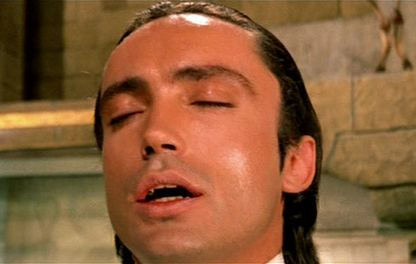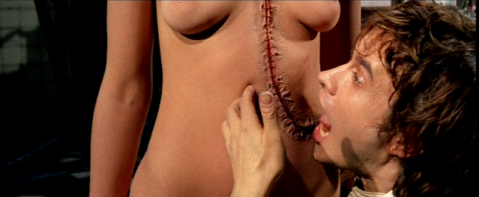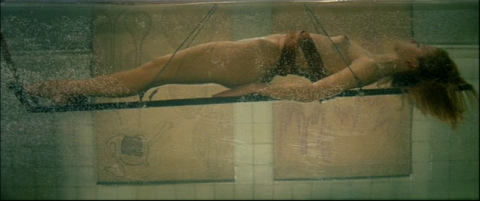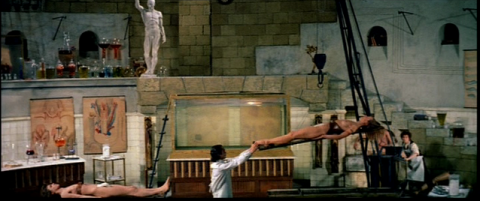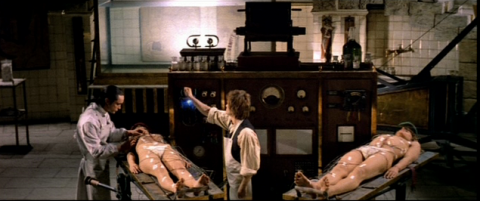Paul Morrissey grasped the concept of mad science as erotic long ago. Here is a close-up on the face of his Baron Frankenstein (played by Udo Kier) in the middle of work on one of his reanimation-bound corpses. His facial expression pretty much tells you what you need to know about what he’s experiencing.
Like master, like student. Frankenstein’s assistant Otto (played by Arno Juerging) will want in on the act eventually.
Squick inded, although perhaps not without it’s squee element. Which is an irony. Morrissey is a self-identified cultural conservative, and the standard critical view is that Flesh for Frankenstein is a critique of hedonism and a technophile approach to life. As Maurice Yacowar comments in his short essay on the movie for the Criterion Collection:
Paul Morrissey’s Flesh for Frankenstein is one of the goriest film comedies ever made. Yet despite its schlocky sensationalism, it’s still a Paul Morrissey film. That means it has some passionately felt things to say about how we live—and mainly waste—our lives today. Specifically, it blames sexual liberty and individualistic freedom for destroying our personal and social fibre by turning people into commodities.
Yeah, yeah. As an exposition of auctorial intention that’s probably close to right. But the funny thing is that for people with the right (or wrong) outlook, movies like this inevitably escape auctorial intention. I must confess that the harder that Morrissey tried to make Baron Frankenstein a villain — a depraved incestuous homicidal madman — the more I found myself rooting for him.
It’s the risk you run, being (or trying to be) an artist. Your villains turn into the Draco in Leather Pants. Probably someday, somewhere, someone will read the Gnosis scripts not as a celebration of mad science-driven erotic adventure but as a critique thereof…

